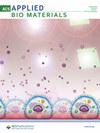Phylogenomic reconstruction influenced by assembly and annotation parameters: Using whole genome data to unravel the relationships of Spionidae (Annelida)
IF 4.6
Q2 MATERIALS SCIENCE, BIOMATERIALS
引用次数: 0
Abstract
Most efforts at improving accuracy in phylogenomic reconstructions have focused on improving tree‐building methods or orthology determination. Even though the use of whole genome sequence or transcriptome data is increasing, the degree to which accurate genome assembly and annotation influence phylogenetic inference has not been well explored. Here, we use low‐coverage whole genome sequencing of spionid annelids to explore the impact of different assemblers and annotation strategies on tree reconstruction. We also produce a phylogenetic hypothesis that spans the breadth of Spionidae, examining the current systematics of the group, which is based on morphological parsimony analyses and classical taxonomy. Our results show that both assembly and annotation can have important consequences for the pool of loci that may be available for tree reconstruction. When an identical phylogenomic pipeline is used, differences in assembly and annotation can account for variation in reconstructed topologies. Interestingly, the completeness and depth of the data used for training annotation software (i.e. data from model systems) appear to be more important, by some measures, than the degree of phylogenetic relatedness of the organism from which training data are drawn. Despite variation in recovered topologies, the recognised subfamily Spioninae is nested within Nerininae, suggesting that diagnostic characters of Nerininae (e.g. thick egg membrane, short‐headed sperm) are symplesiomorphies of Spionidae rather than apomorphies of a particular subclade. With the increased use of genomic data, our results advocate for a broader consideration of how assembly and annotation may impact data matrices used in phylogenomic analyses.受组装和注释参数影响的系统发生组重建:利用全基因组数据揭示匙吻鲟科(无脊椎动物)的关系
提高系统发生组重建准确性的大多数努力都集中在改进建树方法或确定选系上。尽管全基因组序列或转录组数据的使用越来越多,但准确的基因组组装和注释对系统发育推断的影响程度还没有得到很好的探讨。在这里,我们使用低覆盖率的脊索动物环带全基因组测序来探讨不同的组装器和注释策略对系统树重建的影响。我们还提出了一个跨越脊索动物科广度的系统发育假说,考察了该类群目前基于形态学解析分析和经典分类学的系统学。我们的研究结果表明,组装和注释都会对可用于系统树重建的位点库产生重要影响。当使用相同的系统发生学管道时,组装和注释的不同会导致重建拓扑结构的差异。有趣的是,用于训练注释软件的数据(即来自模式系统的数据)的完整性和深度似乎比训练数据所来自的生物的系统发育相关程度更为重要。尽管恢复的拓扑结构存在差异,但公认的匙吻鲟亚科(Spioninae)嵌套在聂耳亚科(Nerininae)中,这表明聂耳亚科的诊断特征(如厚卵膜、短头精子)是匙吻鲟科的同形异义特征,而不是某个亚科的同形异义特征。随着基因组数据使用的增加,我们的研究结果主张更广泛地考虑组装和注释如何影响系统发生分析中使用的数据矩阵。
本文章由计算机程序翻译,如有差异,请以英文原文为准。
求助全文
约1分钟内获得全文
求助全文

 求助内容:
求助内容: 应助结果提醒方式:
应助结果提醒方式:


